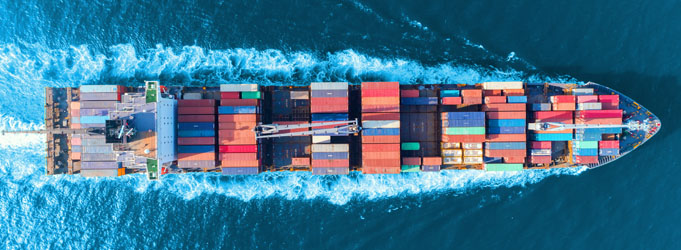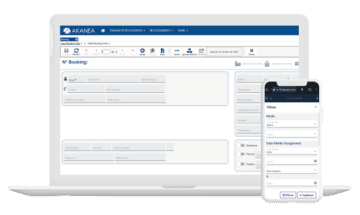
In the field of international trade, order management is a cornerstone of logistics operations.
Freight forwarders and transport commissioners, who play a key role in ensuring smooth operations, must be able to synchronize logistics processes, provide visibility over flows, and comply with regulatory requirements.
Let’s explore why order management systems are strategic in international transport.
What is Order Management?
Order management is the process by which a company receives and fulfills customer orders for goods or services.
This process involves several activities: receiving, processing, executing, tracking, delivering, and invoicing. Effective order management aims to ensure operational efficiency by coordinating all stages, minimizing errors, and meeting delivery deadlines.
For a freight forwarder, order management covers all aspects related to transporting goods worldwide. This includes analyzing client needs, planning transport, managing documentation and customs procedures, and communicating with clients and logistics partners.
What is an Order Management System?
To support this task, companies often use order management systems—software solutions or online platforms that manage the entire order lifecycle, from receipt to final delivery.
By using these digital tools, companies automate and optimize their processes, significantly improving management capacity.
The Steps of Order Management for a Freight Forwarder
- Order receipt: On a dedicated platform, the forwarder’s clients enter their requests through detailed fields, providing complete information such as deadlines, costs, and delivery terms.
- Order validation: After verifying the request, the forwarder confirms it, triggering the execution process.
- Analysis and planning: Once validated, the forwarder analyzes the request to propose the most suitable transport solution. This involves booking the necessary vehicles, planning the shipment route, and defining associated costs and timelines.
- Documentation management: All required transport documents, such as customs declarations, are generated and integrated into the system’s electronic document management (EDM).
- Order tracking: With dashboards and KPIs, the forwarder monitors operations in real time and updates the client accordingly.
- Delivery and invoicing: Once goods arrive at destination, the forwarder issues the invoice and initiates payment processes.
5 Reasons to Use an Order Management System for Freight Forwarders
- Manage complex logistics: International transport involves complex processes—customs regulations, multimodal routes, multiple carriers, strict deadlines, etc. An OMS ensures real-time visibility across every shipment and step.
- Handle large volumes of documents: Accurate documentation is critical for smooth shipping. With a dedicated system, documents are generated and stored in an organized, accessible manner.
- Optimize operations: These systems streamline communication and coordination between all actors in the supply chain (shippers, carriers, ports, airports, etc.).
- Improve customer experience: Clients increasingly demand transparency and tracking. User-friendly platforms provide visibility, and automatic alerts enable proactive communication in case of delays.
- Reduce costs: Automation boosts efficiency while reducing human error. Delays and additional costs become significantly less frequent.
The IT FREIGHT Web Portal by AKANEA

The IT FREIGHT portal, integrated into the Akanea TMS Freight Forwarding software, is a high-performance order management tool designed for freight forwarders, their clients, and their partners.
IT FREIGHT brings together all the strategic features highlighted above:
- Order entry: Shippers can submit transport requests directly on an intuitive web platform. Orders are automatically transferred into the TMS, enabling the forwarder to plan and execute transport according to client requirements.
- Documentation management: The integrated EDM allows both the forwarder and clients to upload and consult transport-related documents, including customs declarations, ensuring compliance and smooth border crossing. Electronic invoicing (aligned with upcoming regulations) is also simplified.
- Operational tracking: Clients gain global visibility over all ongoing shipments and their status. They can track progress in real time and access critical information to anticipate and mitigate delays.
Akanea TMS Freight Forwarding
Adopting an order management system is strategic for international freight forwarders. It enhances operational efficiency, boosts performance, improves service quality, and ultimately strengthens customer satisfaction.
All of these factors contribute directly to competitiveness and profitability in the global logistics chain.

